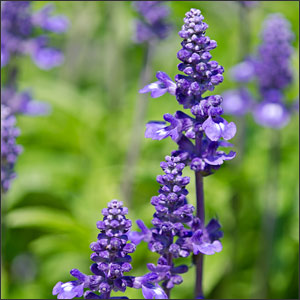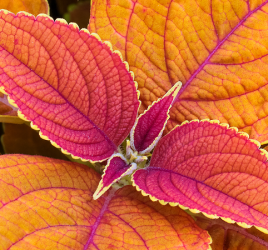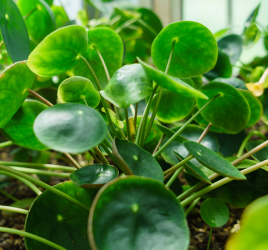How to Grow the Perennial Sage for Beginners

Blue Salvia (salvia farinacea)
Are you looking for an easy to grow perennial?
Welcome to Beginner Gardening Wednesday. Beginner Gardening Wednesday is our weekly series that we have been publishing for over 8 months now. Every Wednesday, we make it our goal to provide our beginner gardeners with tips and tricks that will turn their thumb green.
This month, we are focusing on a particular group, perennials. All month long on Wednesdays, you can find easy to grow perennials that are sure to make your neighbors envious.
Today, we are sharing about perennial sage. This particular perennial is known by other names, mainly salvia. The reason is that there are over one hundred different types of salvias or sages out there. Today, we are sharing about the perennial sage in general.
The word perennial means that this plant will live about 2-3 years. Any perennial you plant helps to make gardening easier because you do not need to plant it each year. Eventually, you will need to divide the plant and you can read about that in our article called, How to Divide Perennials the Easy Way.
How to Grow the Perennial Sage
The perennial sage or salvia are known for their easy care and low maintenance. They are great for cut flowers and attract hummingbirds. They grow tall with flowered spikes with green foliage underneath it. They come in an array of colors including yellows, pinks, reds, bright blues and violets.
- When planting any type of perennial sage, make sure to choose a location that is in full sun and has well drained soil.
- The best time of year to plant is in the spring.
- Depending on which type of perennial sage you select, make sure that when planting, to space them about 1-3 feet apart.
- According to The National Gardening Association, it is helpful to prepare the soil of the garden bed by using a garden fork to loosen the soil up to 15 inches deep. Then add 2-4 inch layer of compost. https://www.garden.org/plantguide/?q=show&id=2058
- Dig the hole about twice the size of the diameter of the pot the plant is in.
- When placing the plant in the hole, make sure the top of the root ball is level with the soil surface.
- Fill in the soil around it and water.
Does growing perennial sage sound like something you want to add to you spring gardening plan? Here is a list of salvias / sages you may like to consider growing in your garden.
- Blue Salvia
- Clary Sage
- Red Salvia
- May Night Salvia
- Saliva pachyphylla
Summary
The perennial, sage, also known by the name salvia, is a perfect addition to any home garden and a great choice for the beginner gardener.



